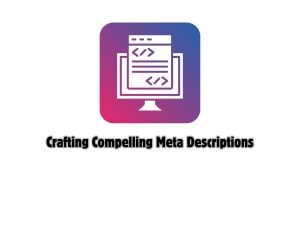
Crafting Compelling Meta Descriptions: A Step-by-Step Guide
Meta descriptions play a crucial role in search engine optimization (SEO) by providing a brief summary of a web page’s content in search engine results
Plagiarism, the act of presenting someone else’s work or ideas as your own without proper attribution, is a serious ethical and legal issue that can have significant consequences in academic, professional, and creative settings. Whether you’re writing an academic paper, crafting professional content, or creating original artwork, it’s essential to uphold principles of integrity and originality. In this article, we’ll explore strategies for ensuring plagiarism-free content in different contexts.
In academic writing, maintaining academic integrity is paramount. Here are some strategies to ensure plagiarism-free content:
Cite Your Sources: Whenever you use someone else’s ideas, words, or data, cite the source properly using the appropriate citation style (e.g., APA, MLA, Chicago). This includes direct quotes, paraphrases, and even ideas that are not common knowledge.
Use Plagiarism Detection Tools: Utilize plagiarism detection tools such as Turnitin or Grammarly to scan your work for potential plagiarism and ensure that you have properly cited all sources.
Understand Paraphrasing: When paraphrasing information from sources, ensure that you rephrase the content in your own words and provide proper attribution to the original source.
In professional writing, maintaining originality is essential for building credibility and trust with your audience. Here’s how to ensure plagiarism-free content in a professional setting:
Create Original Content: Focus on generating original ideas and content that provide value to your audience. Avoid directly copying content from other sources, and instead, strive to offer unique insights and perspectives.
Attribute Ideas Appropriately: If you reference or build upon someone else’s work or ideas, give credit where credit is due. This demonstrates professionalism and respect for intellectual property rights.
Check Company Policies: Familiarize yourself with your company’s policies on plagiarism and intellectual property to ensure compliance with internal guidelines and legal requirements.
In creative endeavors such as writing, art, or music, originality is highly prized. Here are some tips for maintaining originality in creative work:
Find Your Unique Voice: Develop your own unique style, voice, and perspective that sets your work apart from others. Embrace your creativity and authenticity to produce original and compelling content.
Respect Copyright Laws: Familiarize yourself with copyright laws and intellectual property rights to ensure that you’re not infringing on the rights of others. Obtain permission or licenses for any copyrighted material you incorporate into your creative work.
Avoid Plagiarizing Your Own Work: Even if you’re the original creator, be mindful of recycling or repurposing your own content without adding significant new value or insights. Aim to continually innovate and push the boundaries of your creativity.
Ensuring plagiarism-free content across different contexts requires a combination of ethical principles, practical strategies, and awareness of legal considerations. Whether you’re writing an academic paper, creating professional content, or engaging in creative endeavors, upholding principles of originality and integrity is essential for building credibility, fostering trust, and contributing to the advancement of knowledge and creativity in your field. By following the strategies outlined above, you can maintain originality and ethical standards in your work while avoiding the pitfalls of plagiarism.

Meta descriptions play a crucial role in search engine optimization (SEO) by providing a brief summary of a web page’s content in search engine results

In today’s fast-paced digital landscape, real-time interaction has become a cornerstone of online engagement strategies for businesses across industries. Whether it’s responding to customer inquiries





“LeadsView did an excellent job with my project and will definitely recommend. Easy to work with, flexible and good quality of work. I am more than happy to recommend them."




















Copyright 2024 © LeadsView. All Rights Reserved
